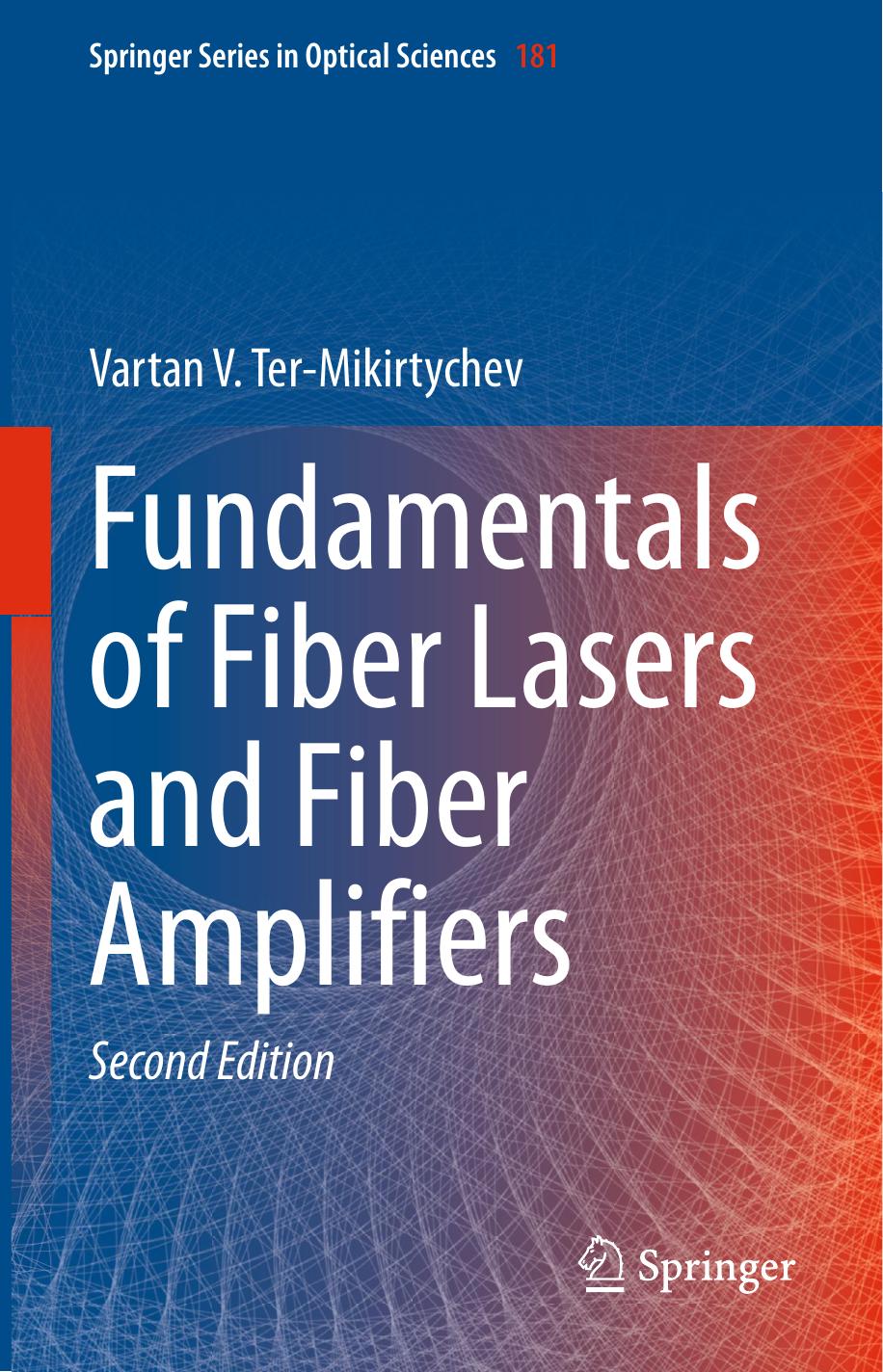Fundamentals of Fiber Lasers and Fiber Amplifiers by Vartan V. Ter-Mikirtychev

Author:Vartan V. Ter-Mikirtychev
Language: eng
Format: epub, pdf
ISBN: 9783030338909
Publisher: Springer International Publishing
Semiconductor compounds
Wavelength of operation (nm)
AlGaInP
~630–690
InGaAlAs/GaAlAs
~780–880
InGaAs
~900–1200
InGaAsP/InP
~1400–1850
InGaAsSb
~2000–2200
9.1.2.1 Basic Structure of Diode Lasers (Single-Emitters)
Fabry–Perot Lasers
In the simplest form of the laser diode, an optical waveguide is made on the crystal surface in such a way that the light is confined to a relatively narrow line. The two ends of the crystal are cleaved to form perfectly smooth, parallel edges, thus forming a Fabry–Perot (FP) resonator with semiconductor gain material located between reflecting surfaces. Light in the laser diode travels along the waveguide created by the p-n junction and is reflected from the end faces of the semiconductor. Because one end of the semiconductor material is cleaved, the traveling light inside the diode, the laser cavity , undergoes incomplete reflection from this end facet and emerges outside the diode laser resonator. When the laser threshold is reached (i.e., when more amplification than loss is achieved), the diode laser begins to oscillate.
In most types of diode lasers (edge-emitting lasers), the light is confined in a very thin layer—a waveguide. This waveguide usually supports only a single optical mode in one direction (i.e., in the direction perpendicular to the semiconductor layers or the plane of junction). In this direction, therefore, the diode laser beam is close to diffraction limited . In the perpendicular direction, if the waveguide is wide compared to the wavelength of light, the laser is multimode. In this case, due to diffraction, the beam diverges rapidly after leaving the semiconductor chip, typically at ~40° vertically (fast axes) by ~10° laterally (slow axes). The typical wavelength-temperature dependence is ~0.3 nm/°C. If the laser diode-emitting area is strongly asymmetric, the diode laser is called a broad-area laser (BAL); this is the case for multimode edge-emitting diode lasers.
The wavelength emitted by a diode laser is a function of the bandgap of the semiconductor and the modes of the optical cavity. In the laboratory environment and product installations, spectral properties of the semiconductor laser depend on temperature and pump current (in the case of injection lasers).
Download
Fundamentals of Fiber Lasers and Fiber Amplifiers by Vartan V. Ter-Mikirtychev.pdf
This site does not store any files on its server. We only index and link to content provided by other sites. Please contact the content providers to delete copyright contents if any and email us, we'll remove relevant links or contents immediately.
| Cell Biology | Developmental Biology |
| Entomology | Marine Biology |
| Microbiology | Molecular Biology |
| Biostatistics |
Sapiens: A Brief History of Humankind by Yuval Noah Harari(13037)
The Tidewater Tales by John Barth(12026)
Do No Harm Stories of Life, Death and Brain Surgery by Henry Marsh(6332)
Mastermind: How to Think Like Sherlock Holmes by Maria Konnikova(6224)
The Thirst by Nesbo Jo(5778)
Why We Sleep: Unlocking the Power of Sleep and Dreams by Matthew Walker(5636)
Sapiens by Yuval Noah Harari(4528)
Life 3.0: Being Human in the Age of Artificial Intelligence by Tegmark Max(4492)
The Longevity Diet by Valter Longo(4443)
The Rules Do Not Apply by Ariel Levy(3897)
The Immortal Life of Henrietta Lacks by Rebecca Skloot(3820)
The Body: A Guide for Occupants by Bill Bryson(3789)
Why We Sleep by Matthew Walker(3767)
Animal Frequency by Melissa Alvarez(3750)
Yoga Anatomy by Kaminoff Leslie(3696)
Barron's AP Biology by Goldberg M.S. Deborah T(3628)
The Hacking of the American Mind by Robert H. Lustig(3575)
All Creatures Great and Small by James Herriot(3506)
Yoga Anatomy by Leslie Kaminoff & Amy Matthews(3392)
